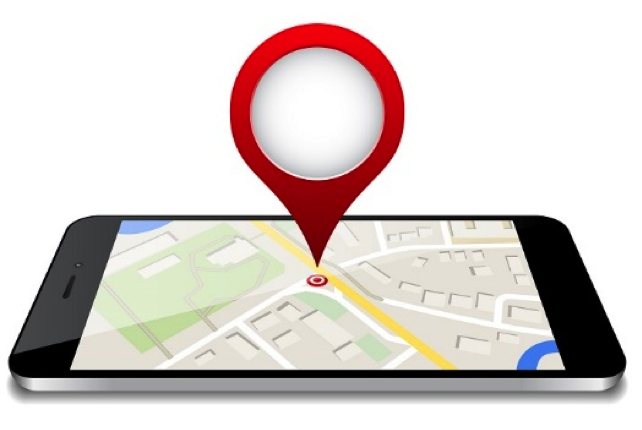In the last post you learnt that local SEO and traditional SEO may be related but the family resemblance isn’t all that strong.
(Grab a refresher here if you need it!)
So, let’s get your site optimised for local search.
What are the ranking factors for local SEO?
Local SEO may be new turf but we love to stomp those old pie charts’ ground.
The good old Moz crew not only round up traditional SEO experts to try and get a close-as-possible view of the ranking factors for traditional SEO, they also do the same with the local SEO experts.
Here’s what their latest survey (here) suggested:
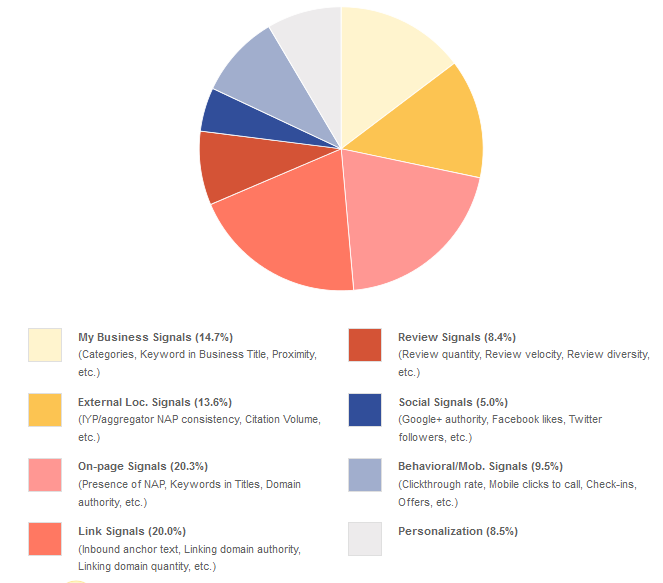
Let’s break it down.
- Local listing sites (including Google My Business and external location signals) account for nearly a third. (28.3%)
- On-page signals are roughly the same as local signals detected through links off-page. (20% each)
- User signals weigh in next with Personalisation and Behavioural factors. (9% each)
- Reviews are not far behind. (8%)
- Whilst social signals are considered to be a ‘weak’ ranking factor. (5%)
A quick scan of this tells us:
- Those directory and My Google Business listings are the deal breakers.
- But we must also make sure our on-page signals are strong.
- Links we can deal with through traditional SEO tactics – we’ll just make sure we target a few ‘local’ sites about ‘local’ topics.
- And then there’s some reviews to pick up.
No sweat. This is going to be a cinch!
Local SEO and Google My Business
If you haven’t already, you’ll need to claim your Google My Business page (here).
Set it up making sure you include:
- A detailed, compelling and unique description that includes links.
- The correct categories for your business.
- Many quality photos and a profile image.
- A local phone number
- A business address that’s consistent with that on your website – we’ll come to the other local directories that list your address in a minute.
- Your opening times.
Job done?
Well almost: you are also going to need to regularly secure reviews for your profile.
But, one step at a time, we won’t let you forget about these.
Your NAP (Name, Address and Phone Number) and local SEO
The NAP that you list on your website and Google My Business must be consistent.
In fact, scratch that, wherever you use your NAP it must be consistent and wherever someone else uses it consistency is key too.
Local SEO is about maintaining consistency: let us explain why.
Google wants to trust your business. It bases its trust on the number of reputable sources that tell it the same thing. Exactly the same thing. And when it hears something different it begins to doubt you.
Each time your NAP is not consistent Google loses a little trust.
You can give yourself a head start in gaining trust by showing Google how sure you are of your own NAP.
- Include your NAP on every page of your site. If you have multiple branches your best bet is to create individual pages for each branch.
- Use Schema.org markup to make sure it is unmistakably your name, address and phone number.
For more on Schema see the unit on ‘Schema markup’ in the published Fast Track SEO Course.
Here’s the Schema code you can adapt:
<div itemscope itemtype=”http://schema.org/LocalBusiness”>
<p itemprop=”name”>COMPANY NAME</p>
<p itemprop=”address” itemscope itemtype=”http://schema.org/PostalAddress”>
<p itemprop=”streetAddress”>ADDRESS LINE 1</p>
<p itemprop=”addressLocality”>CITY</p>,
<p itemprop=”addressRegion”>REGION</p>
<p itemprop=”postalCode”>POSTCODE/ZIP</p>
<p itemprop=”telephone”>PHONE NUMBER</p>
meta itemprop=”latitude” content=”LATITUDE” />
<meta itemprop=”longitude” content=”LONGITUDE” />
</div>
Now you just need to make sure you get your NAP and consistent Category on as many reputable local directories as you can.
SEO experts love to use arcane vocabulary. They call the holy trinity of the NAP and its equally divine Category a citation wherever it is listed.
Now, whilst you are finding those directories, let’s just finish off your on-page optimisation for local SEO.
(You can find some of the best directories listed in ‘Find out more’ at the end of this post – I’m nice like that!)
Local SEO and the other on-page ranking factors
Sometimes doing local SEO work can feel a bit like stepping back in time, to an era when optimising your site seemed so much easier.
Just like in the good old days of SEO, over in sleepy local SEO land on-page content can help you rank just as significantly as those hard to secure links.
So, here’s your on-page tips.
Try and have one page that is your focussed local landing page (for each local area you serve).
Make sure this page is optimised to the hilt: this handy infographic (here) shows you just what a local landing page needs – and you can support it with some blogs about local events, landmarks or even local celebrities.
Add your city and/or region plus a relevant keyword about your business (probably the name of your Category) to your page’s:
- Meta title
- H1 tag
- URL
- Content (the earlier the better)
- Image ALT attributes and filename
Finally embed a Google map with your business marker into your landing page.
OK: that was easy, wasn’t it?
Are you ready to get those citations?
Local SEO and citations in local business directories
We hope you’ve not still got your traditional SEO head on and are wandering round like an automaton going, “I must get links. I must get links. I must…”
Forget building links for a second. Local SEO is all about citations (or mentions).
The great thing is there’s no Google slapping you down if you look like you are too much in control of your mentions. In fact, most of them will come from directory listing sites that you have to manage yourself.
If you can just get a mention (citation) of your NAP – and better still a mention of your Category alongside it – then you are sending some powerful off-page signals that will boost your local SEO.
It’s not quite as easy as we’ve made it sound. For most businesses the problem isn’t getting these but cleaning up what’s already there.
And usually it’s a mess.
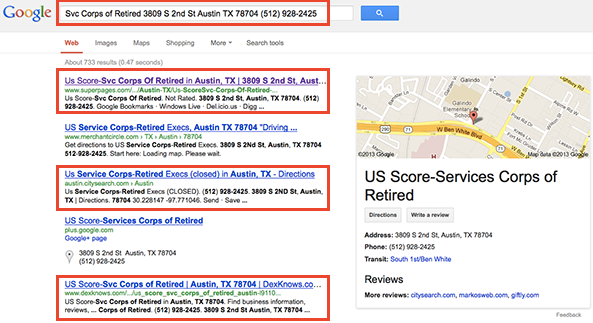
Your business may have moved locations, changed name or simply put out an incorrect address that has worked its way through the web.
It’s clean up time.
Moz provides a handy tool for UK and US businesses (here) that can check citations you have not secured, inform you where your listings are not optimised and show you where opportunities exist to get more.
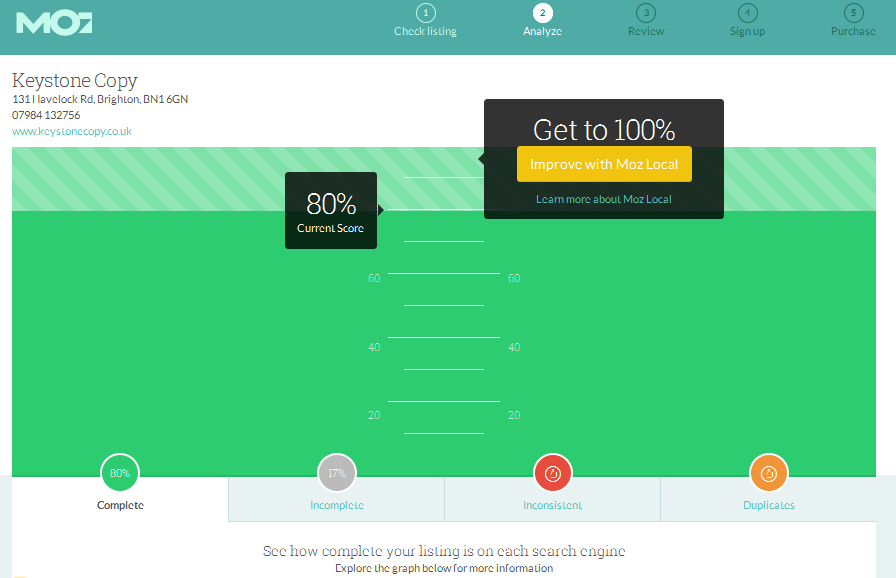
The most thorough way, however, to clean up your listings though is to check the SERPs the old-fashioned way. And that feels about right for local SEO.
To do this you are going to need some search queries. Here they are:
“Business name” AND “Postcode” -site:http://www.yoursite.com
“Business name” AND “Former postcode” -site:http://www.yoursite.com
Type these in exactly as they appear (substituting your own business name, postcode and website). Don’t forget that minus sign – you want to exclude your own website here.
These two searches should pull up plenty of listings for you to check. If any are incorrect you’ll need to visit the directory, claim your listing, change it and verify it (by email, post or phone).
Once you’ve cleaned up here you can start building your local ranking factors on the very secure foundations you have made.
In ‘Find out more’ below here are suggestions for where you can find more opportunities for citations (and remember not all are business directories).
Here’s one more tactic you can use.
It relies on a search query similar to the one you used to clean up your NAP citations. Except this time it will show you where competitors have secured a NAP that you haven’t.
Haven’t yet, that is.
“Competitor’s Business Name” AND “Competitor’s Postcode” –site:http://www.competitorswebsite.com
Again don’t forget that minus sign and BINGO: every NAP they have will be there for the taking.
Building local links for SEO
Aren’t you the local SEO hero?
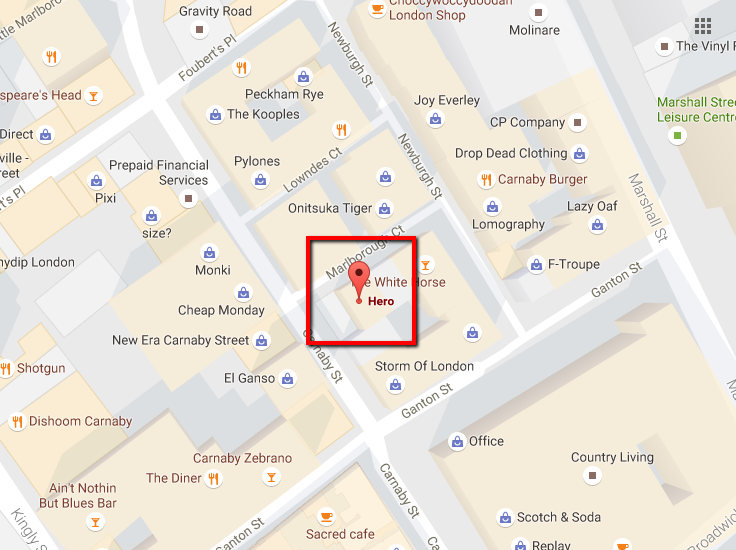
You have done fantastically: your website is optimised, your NAPs are consistent and all you have left to do is work on building some local links and gaining some local reviews.
It’s not that those big authoritative sites aren’t important to local SEO: it’s just that they magnify what actually makes a difference.
They are no longer the be all and end all: it’s local signals from sites that are relevant to your business that you need first and foremost.
So, head back to our link building tactics and start thinking about these with local sites in mind.
It’s rather like putting blinkers on a horse.
Here’s some ideas to get you under starter’s orders.
- Use local networking groups or events that are relevant to your company (you can find them here on Meetup.com) to sponsor a lunch or a prize. Accept gracefully the offer of a link from their local website.
- Host your own event and reap the links from local listings sites.
- Create a local resource from public data and share it with local journalists and community websites. (The case study here brings this tactic to life.)
- Pick your authority area (or invent one) and offer interviews to local online publications.
- Enter every local award going or, better still, start your own one.
Hopefully you see where we’re coming from and where you’re going?
See you at the finish line.
Local SEO and reviews
All that’s left is to get those reviews.
Remember, these do not necessarily have to be reviews left on your Google page. You can secure these on Yelp and other local directories too.
(But, between you and us, we’d focus on Google.)
Let’s set out the no-no’s:
- Trying to fake a review is a bad idea.
- Getting too many reviews in one go is a bad idea.
- Responding stroppily to a bad review is a stupid idea.
- Copying and pasting the same review with different names is the dumbest idea in the long and undistinguished history of idiocy
There are lots of tips and tactics for securing these (and we include a few in ‘Find out more’ below).
For now, we’ll just whet your appetite with two no brainers and emphasise that reviews can make the difference between ranking or not.
After all, it wasn’t that hard to get those citations, was it?
So how hard can it be to get a review?
- Contact existing customers and incentivise them to leave a review (never incentivise them to leave a good review – that way lies hot water).
- What has put customers off leaving a review in the past is confusion over how to do it.
- Thankfully Google has made this process easier but it still makes sense to have a page on your site that walks them through it step by step.
And that is local SEO
That’s it?
You won’t be saying that when you see the results.
Local SEO is refreshingly uncomplicated.
Here’s your checklist:
- Google My Business page set up?
- Local pages on site optimised?
- NAPs consistent and in quantity?
- Reviews coming in to Google and Yelp?
- Local links being secured?
Well done – you’re on the map.
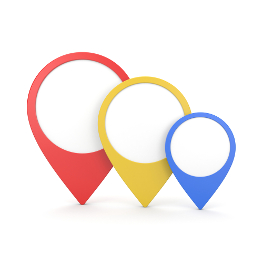
Find out more
- The local search ranking factors can be explored in more detail here.
- Make sure Schema markup is part of your scheme here.
- Let Moz make securing citations easier here.
- Find oodles of places to secure citations (in the UK) here.
- Find for resources listing citation sources (for the US) here.
- Resolve 30 common local SEO problems here.
All the previous posts in this series can be found here.
For the complete version of this Fast track SEO course head over to Amazon. There’s tons more info and actionable tips.
And it’s yours for less than a fiver!
